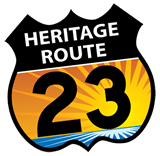Fig. 1. Ash trunk: note the tightly “corrugated Y” pattern, typical of ashes (before Emerald Ash Borer). Seeing this bark pattern in winter is enough to identify an Ash, although it is good to verify with other characteristics.
Fig. 4. Ash terminal buds; easy to see on young trees; too far away on tall trees. They are an identifying feature in winter and spring, along with the bark pattern, opposite branching, and messy-looking branches.
Fig. 5. Young Ash: Note the opposite branching pattern and that not all of the pairs arise in the same plane, which, along with some broken-off branches in older trees, can mis-lead one into not recognizing the opposite branching.
Fig. 6. Ash: bare branches in winter. Note the opposite branches. The side (lateral) branches are long-ish and generally curve towards the tip of each branch.
•Susceptible to Emerald Ash Borer and are dying along ABP-NTA and the area in general
•Bark appearance of corrugated "Y's" (Fig. 1)
•Lower branches often droop downwards. (Fig. 2)
•Bare branches look "messy" (takes practice to discern) (Fig. 3)
•Terminal buds are distinctively broad at the base (Fig. 4)
•Twigs with opposite pattern of buds / leaves / branching (very easy to see on young trees (Fig. 5). On older trees, some branches break off or are oriented so that you only see one, giving an alternate-branching appearance - look carefully for opposite branching on older trees Fig. 6)
•The opposite branches are "long-ish" and often curve towards the tip of the branch. (Fig. 6)
•Leaves are compound. i.e. with several leaflets arising from one petiole off the twig. (Fig. 7, 8, 9)
•Ash are the only trees with opposite, compound leaves on ABP-NTA (except 1 Box Elder)
•Fruit: single samara (seed with a "wing") (Fig. 10); clusters (panicles) of samaras (Fig. 10 and 11) and comparison with maple samaras (Fig. 12)
•In winter, clusters of the small stalks of the samaras, sometimes with a few samaras, can remain high in the trees and are visible from the ground. (Fig. 13 and 14)
• Most ashes on ABP-NTA are Green Ash
•Ashes are dioecious (the male and female flowers are on separate trees), although this is not obvious to the casual observer
•Historical uses: (confused with White Ash); wood ashes provide potash; baseball bats, tennis racquets; tool handles, canoe paddles
This information is basic by design and does not include total botanical information about each species (kind of tree). Rather, only more or less easily observable features, mostly throughout the seasons, are listed for each numbered tree in the Alabaster Bike Path-Native Tree Arboretum (ABP-NTA). Some of the species have distinctive flowers and fruits which are included; however, there are years of heavy flowering / fruiting and years of little or no flowering / fruiting. Because all natural populations have variation, it is best to look at several examples of each characteristic. All photos (except where noted) and all text by sczaika. Historical uses from Hough, R.B. The Wood Book. Royal Botanical Gardens. The preeminent classic botanical source for Michigan (mostly native) trees is Barnes, B. V. and W. H. Wagner, Jr. 2004. Michigan Trees: A Guide to the Trees of Michigan and the Great Lakes Region. The University of Michigan Press. A supplemental resource is Kershaw, L. 2006. Trees of Michigan including Tall Shrubs. Lone Pine Publishing International. A useful field guide is Tekiela, S. 2002. Trees of Michigan Field Guide. Adventure Publications, Inc. Cambridge, MN
Included In:














